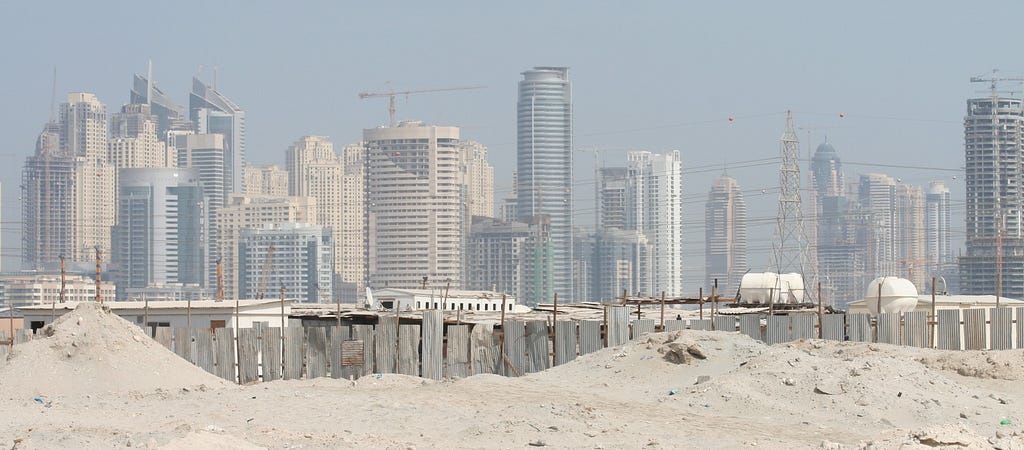Books & Culture
City-Dwellers Under Stress
5 writers explore urban disquiet and the evolving tensions of 21st century city living

Cities are places where people can go to find themselves, to experience a wealth of culture and human experience. Cities are also places where people can unravel, where density, claustrophobia, and economic anxiety can get inside someone’s head and lead them to unsettling places. That’s the paradox at the heart of urban life. As societies around the world become increasingly urbanized–as people leave rural and suburban areas for more densely-populated regions–these tensions intensify. They’re also the same tensions that drive a host of great fiction forward–and, not surprisingly, the result has been an increase of novels and short stories addressing the modern sense of urban disquiet.
When dealing with a character’s sense of anxiety, or flat-out fear, in a city, writers have plenty of options. There’s a long literary history of fiction tackling urban angst. Books like Patrick Hamilton’s Twenty Thousand Streets Under the Sky and John Dos Passos’s Manhattan Transfer convey a sense of place and the foibles and fears of city-dwellers through realism and stylish prose and dialogue. On the surreal side of things, you have J.G. Ballard’s High-Rise, which uses a futuristic apartment building as its setting, even as it dismantles notions of civilization and the illusions its residents have about their world. China Miéville’s The City & The City is set in a thoroughly designed micronation that’s also metaphorically resonant of contested territories around the world. It could be a conflict zone, or it could be a neighborhood a few miles away.
Five recent books from across the globe demonstrate the ways in which questions of urban anxiety and restlessness can be turned into compelling fiction. Mr. Cui, the protagonist of Ge Fei’s The Invisibility Cloak (translated into English by Canaan Morse), lives in Beijing and makes a living working with high-end audio equipment–a world in which there are a dwindling number of potential clients. The tone of the book is quickly established in the first paragraph, as the narrator arrives at a building called “The Brownstones”:
“‘The Brownstones’ has been a household name in Beijing for years, ever since they executed the district mayor, Zhou Lianglou, for accepting millions in bribes on local real estate deals, including the one that made these apartments.”
Here, cynicism blends with a knowing sense of place. Soon, we learn more about Mr. Cui: he’s an audiophile’s audiophile, and is (among other things) horrified to hear the music of actor and pop singer Andy Lau emerge from a high-end set of speakers. “Something is definitely wrong with the world,” he observes.
The title of The Invisibility Cloak refers to a rumored item possibly owned by a fabulously wealthy figure who’s gone long before the events of this novel begin. It’s a useful image for a number of reasons: it hints at the social strata that exist high above the embittered narrator, and it emphasizes the way that several characters in the novel never quite connect. Bonds–whether between members of the same family or between professionals and clients–fail to click, as though one party can’t quite see the others for who they are.
But there are also moments of jarring violence: a client of Mr. Cui’s produces a gun to settle a dispute in a restaurant; Mr. Cui remembers the end of his marriage, where news of the divorce prompted him to a horrifying act of self-harm; a supporting character takes his own life in a particularly unsettling way; and a women whom Mr. Cui meets late in the book bears scars from a mysterious and terrifying incident which is never entirely explained. For all that its characters seem familiar with a certain level of power, it’s also implied that there are even more sinister and ominous forces circling them, with agendas beyond their understanding.
In the character of Mr. Cui, Ge Fei has centered a memorable combination of traits. Cui is a worldly cynic and an urban insider who also retains the capacity to be shocked. Like the “cloak” that gives the book its title, there are certain intangible or unattainable forces in the world in which he lives, each capable of great benefit or monstrous harm.
While they’re in very different lines of work, Mr. Cui has more than a little in common with Katya Grubbs, the protagonist of Henrietta Rose-Innes’s novel Nineveh. Katya lives and works in Cape Town, where she owns and operates a no-kill pest control service. Slowly, Rose-Innes reveals additional facets of Katya: her troubled relationship with her father, who also works in pest control; her sometimes-frayed bond with her nephew, who works for her; her inexplicable attraction to a loutish client, which ranks relatively high on the list of terrible yet plausible ideas by fictional characters.
It’s that client who introduces Katya to the building that gives the novel its title. Nineveh is an apartment complex that’s been overrun by an infestation of mysterious beetles which seem nearly impossible to locate or deal with. It’s one of several aspects of the novel that lend it an eerie quality. Rose-Innes does a fantastic job of creating a sense of the tactile, the grotesque (one early scene finds Katya dealing with an abundance of caterpillars), and the constancy of change. Nineveh includes a handful of moments in which the destruction of green spaces is lamented–but, like Katya’s ostensibly humane techniques, paradoxes abound.
And, as befits a novel whose central character understands structures and strata better than most, the language here is both insightful and evocative. This description of a room in Nineveh aptly captures a sense of place, as well as the sense of instability that comes with it.
“No wall is ever silent; always there is a subdued orchestra of knocks and sighs and oceanic rushing. The hum of pipes, the creaks of bricks and mortar settling. Or unsettling: such sounds are the minute harbingers of future destruction, the first tiny tremors of a very, very slow-motion collapse that will end, years from now, in a pile of rubble.”

Some of the most menacing cities are the ones we carry with us beyond their borders. Kelly Luce’s novel Pull Me Under opens in the Japanese city of Tokushima in 1988, as a twelve-year-old girl named Chizuru fatally stabs the bully who tormented her. Chizuru is the daughter of a nationally beloved violinist, who effectively abandons her after the incident. After years in a detention facility, she moves to her mother’s homeland, the United States, where she renames herself Rio and does everything she can to put the past behind her.
9 Stories About the Magic of Cities
Rio learns of her father’s death and returns to Japan many years later, after she’s married and become a mother. But throughout the book, Luce imparts a sense of place–whether it’s the small city that Rio now calls home, the terrain through which she runs to clear her head, or the pilgrimage trail on which she embarks with a former teacher after attending her father’s funeral. In Luce’s telling, time takes on an almost physical component–which meshes neatly with the way in which Pull Me Under explores both paradoxes and duality. Her descriptions of physical places help to accentuate that.
“Futons loll over railings like tongues. Concrete apartment cubes rise between wooden houses; in some cases it seems the new building is the only thing keeping the old one from falling apart.”
It’s a subtle storytelling choice, using a straightforward story to explore the ineffable, the conflicted, and irreconcilable.

There’s an even greater sense of duality in Mohsin Hamid’s novel Exit West, which plays out like a master class on dramatic timing — when to supply details and when to withhold them. It tells the story of a couple, Nadia and Saeed, who meet as their country slowly collapses in a civil war and ultimately decide to seek a better and safer life elsewhere. It’s a storyline that come come from the grimmest of news articles, save for the one decidedly magical realist element: doors in Nadia and Saeed’s city can sometimes transport people across the globe.
The burgeoning affection between Nadia and Saeed seems entirely realistic and naturalistic, while the horrors of their city’s descent into a warzone comes off as eminently plausible and utterly gut-wrenching. But Hamid makes interesting use of names in this book: outside of the couple at its center, no other character is given a name. (This shouldn’t be taken to mean that they’re not well-rounded characters: Saeed’s parents, for instance, are quickly and deftly established as multidimensional.) Similarly, the places to which people travel through the magical doors are named, but the city in which the novel opens is not. Nevertheless , Hamid manages an evocative sense of what life is like there–and what dangers it might hold.
“One’s relationship to windows now changed in the city. A window was the border through which death was possibly most likely to come. Windows could not stop even the most flagging round of ammunition: any spot indoors with a view of the outside was a spot potentially in the crossfire.”
The novel takes Nadia and Saeed to a number of other locations, each of which Hamid imbues with a memorable level of detail and a haunting evocation of its own dangers. While the use of its one magical realist element creates a stylized feel to the narrative, Hamid is grappling throughout with some of the biggest issues of our time, and tying them inextricably to a larger sense of place.
Perhaps there are some instances in which a sense of urban disquiet can best be conveyed by means outside realism. The stories in Deepak Unnikrishnan’s Temporary People focus on the lives of foreign workers brought in to work in the United Arab Emirates. And throughout the book, bodies are constantly in flux, dehumanization is rampant, and dislocation is a constant. In one of the most memorable stories, a scientist creates a process by which workers with a finite lifespan can be grown in labs before being dispatched to several years of labor.
In Unnikrishnan’s narrative, the elasticity and malleability of bodies, languages, and identities takes on a haunting quality. Sometimes the language of metaphor suddenly turns literal, as in “Birds,” a story about a women whose job involves repairing “construction workers who fell from incomplete buildings.” Here, she muses on one of the streets where she works.
“Anna knew Hamdan as intimately as her body. In the seventies, when she first arrived, the buildings were smaller. Nevertheless, she would, could, and did glue plus tape scores of men a day, correcting and reattaching limbs, putting back organs or eyeballs. And sometimes, if the case was hopeless, praying until the man breathed his last.”
At its best, Temporary People ties together a feeling of place with a fundamental sense of alienation. Or, perhaps, alienations–Unnikrishnan charts a multitude of ways in which people can be distanced from one another, and uses a host of surreal devices in order to make this even more tangible.
Despite the population density inherent to nearly all cities, the potential for solitude and despair while living there is very real. These five books showcase different ways in which people experience a profound sense of disquiet and disconnection while living in a city. Whether alienated from human connection, labor, or questions of belonging, the range of unrest one feels in an urban space is vast. These stories impart a greater sense of that unrest in others, and leave the reader with a greater connection to the people living around them, whether friends or strangers.









